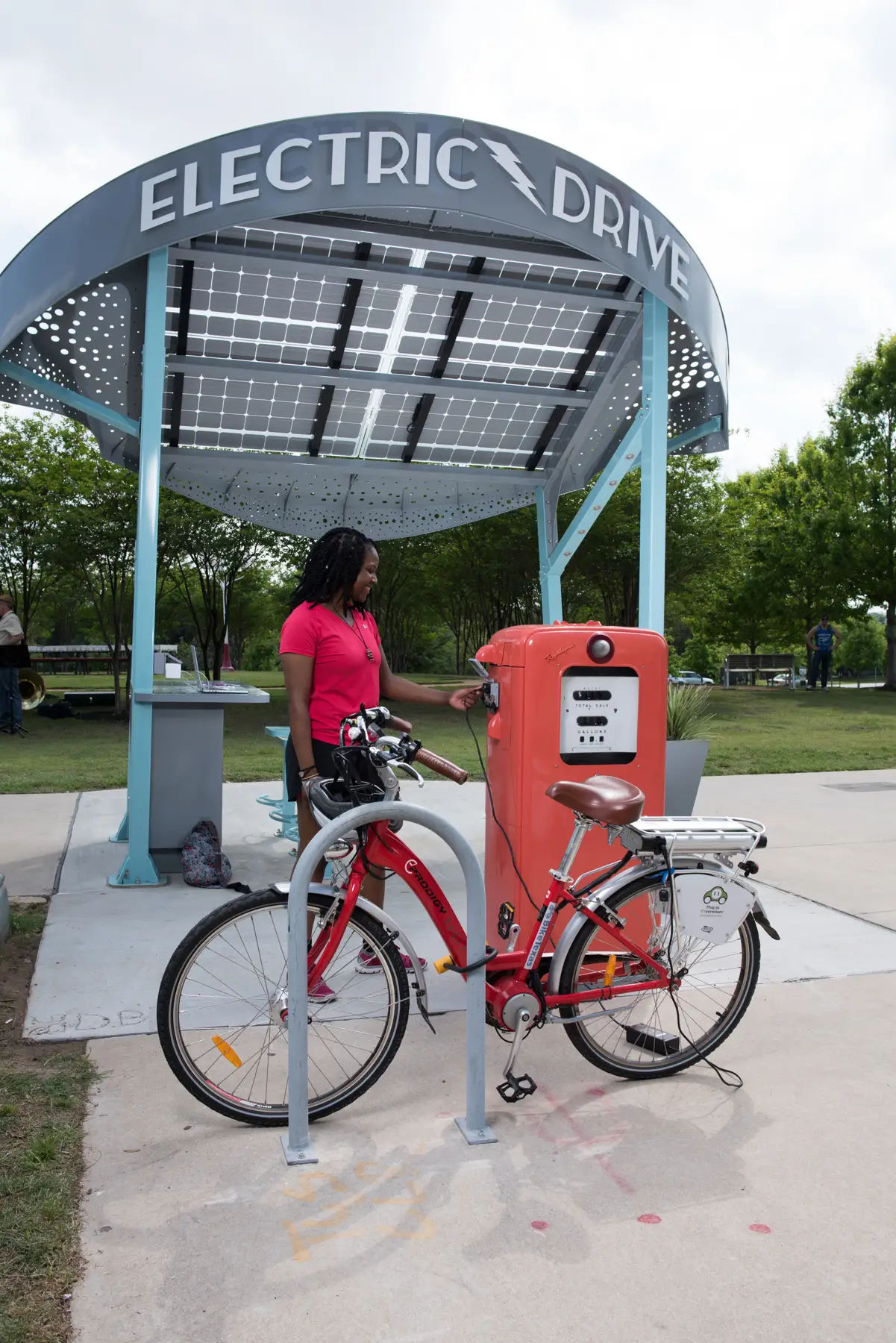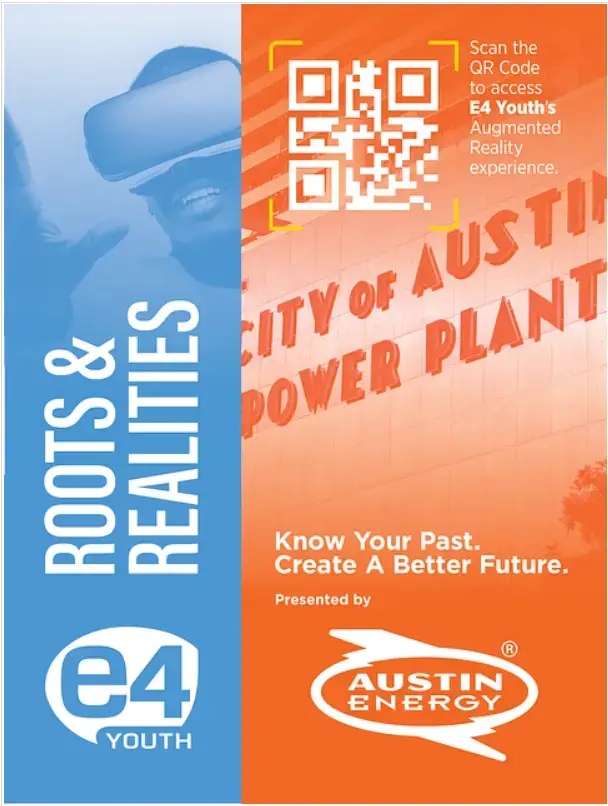Electric Drive
Seaholm Power Plant
Neill Cochran House Slave Quarters
Austin’s Only Intact Slave Quarters
The slave quarters building at the Neill-Cochran House Museum is the only existing, intact slave dwelling located within the city of Austin. This historic site offers a rare chance to see and experience the conditions in which enslaved people in Austin worked and lived.
Jacob Fontaine Gold Dollar Building
First Black Newspaper West of the Mississippi
This building was home to the Gold Dollar newspaper, one of the first Black newspapers west of the Mississippi. Between 1870 and 1900, it was among 48 Black-owned commercial newspapers in Texas. However, the Gold Dollar building is more than just a former newspaper office; it is the last standing structure of Wheatville, a freedom colony in Central Austin that once spanned from 24th to 26th Streets, and from Rio Grande Street to Shoal Creek
Neill Cochran House Museum
The Neill Cochran House Museum is located at 2310 San Gabriel Street in the heart of Austin. It was named after two prominent families that lived there after the Civil War, the Neills who purchased the property in 1876, and the Cochran’s, who acquired it in 1895. The home was initially commissioned by the Hill family and built in 1856 by unknown free and enslaved craftspeople under the supervision of master builder Abner Cook. Enslaved artisans crafted the primary house.
Founding of Waco TX
Connie Kirk – VR Story
Connie Jo Kirk, an Austin, Texas native, fondly remembers East Austin as a wholesome, integrated community where Blacks and Hispanics coexisted harmoniously without racial tensions. She recalls a time when neighbors shared recipes and held decorative street parties, fostering a united community spirit. Kirk highlights that East Austin is the original neighborhood of Austin. She emphasizes that East Austin’s rich history and the legacy of its leaders remain accessible for future generations to learn from.
What Causes Gentrification? What to Know and What to Do | What Once Was

Written By: Ben Perez
Edited By: Elisa Calderon
Introduction
Gentrification is a contentious issue that impacts communities around the world and has been affecting Austin neighborhoods and communities for years. It has become a focal point for discussions on urban development, cultural heritage, and ideas about equity. In this blog post, we will look into gentrification’s causes, economic factors, the impact it has on neighborhoods, the problems it poses, the likely areas where it occurs, and what we can do about it.
Understanding Gentrification
Gentrification describes the transformation of a neighborhood or area, typically occurring in urban settings, where wealthier residents move in which leads to economic as well as cultural changes. For a more in depth look at what gentrification is, you can refer to our blog post “What is Gentrification?” found here (insert link).
What Causes Gentrification?
Gentrification is driven by a combination of metropolitan policies, the influx of wealthier residents, and decisions made by local city governments. These governments create policies which, though often geared towards revitalizing areas, inadvertently contribute to the displacement of low-income residents that comes with the gentrification of neighborhoods.
What Economic Factors Contribute to Gentrification?
Economic factors are pivotal in the process of gentrification. Low-income residents in gentrifying neighborhoods are especially vulnerable to rising property values & costs and urban development initiatives, which often lead to their displacement. As housing prices soar, these economic shifts force many long-time residents out of their homes and businesses.
What Makes a Neighborhood Gentrified?
A gentrified neighborhood undergoes a significant transformation in its demographics, property values, development, and cultural fiber. Shifting demographics, driven by an influx of affluent (and overwhelmingly white) residents, lead to changes in the neighborhood’s culture and character. Urban development and increasing property values contribute to this process, which causes the area to be considered gentrified.

What Issues Does Gentrification Cause?
Displacement and erasure of cultural heritage are just a couple of the negative impacts experienced by affected communities. The lack of affordable housing options exacerbates these problems, making it difficult for displaced residents to find affordable housing. This leads to a loss in the original “character” of these neighborhoods.
Where is Gentrification Most Likely to Happen?
Gentrification occurs in lower-income neighborhoods, especially in areas experiencing rapid job growth with a demand for urban living. One example is East Austin, where the tech industry boom led to a surge in property values and urban development projects which have led to the displacement of many long-term residents and local businesses.
What Can We Do to Combat Gentrification?
Even though gentrification presents significant challenges, there are ways to combat its effects. You can start by actively participating in your community through voting, supporting organizations dedicated to affordable housing, and staying up to date on local policies regarding these issues. Organizations like E4 Youth and the What Once Was initiative are making a difference by preserving the cultural heritage of gentrified neighborhoods in Austin. By partnering with or donating to organizations like this, you contribute to the preservation of community identity and help create a more equitable urban environment.
Gentrification is a complicated issue with wide-ranging impacts and effects. Understanding its causes, effects, and potential resolutions is essential for inclusive and equitable urban development. By staying engaged, supporting relevant organizations, and advocating for equitable policies, we can work together to mitigate the negative effects of gentrification and retain the vibrant history and heritage of Austin’s historical communities and neighborhoods.
The Impact of Gentrification in Austin | What Once Was
 Written by: Ben Perez
Written by: Ben Perez
Edited by: Elisa Calderon
The Impact of Gentrification in Austin and How to Take Action
Gentrification is a term that has become increasingly prevalent in urban discussions, especially in Austin. In this blog post, we’ll delve into the changing face of Austin through the lens of gentrification—understanding the history, exploring its impacts, examining how the city is addressing this issue, and the ways we can individually and collectively respond.
Examples of Gentrification in Austin
The gentrification of Austin is complex, with various neighborhoods experiencing different degrees of transformation. For example, South Congress Avenue, at one point a hotspot of local establishments and artistic expression, has seen a surge in more upscale developments in recent years, which has led to the pushing out of smaller businesses. The East Cesar Chavez neighborhood has also witnessed rising property values and the influx of affluent residents, displacing long-time and majority BIPOC residents. For a more comprehensive description of gentrification, check out our blog “What is Gentrification?” There, you can gain a better understanding of the complex realities of gentrification and how they impact neighborhoods.
The History of Gentrification in Austin
Austin’s Freedom Colonies
To understand the roots of gentrification in Austin, we should acknowledge the city’s history of freedom colonies. A few examples of these communities in Austin include Wheatville, Clarksville, and Montopolis. These were self-sufficient communities established by the Black community after Emancipation in 1863. Over time, some of these colonies faced challenges due to urban development, resulting in the erosion of their cultural identity.
The Rise and Fall of East Austin
East Austin, historically a hub for BIPOC communities, has undergone significant changes as Austin expands and gentrifies. Once a bold center of Black and Latinx culture, the pressures of gentrification have displaced and erased much of the cultural heritage and presence once found here. Facing skyrocketing property values, long-time residents found themselves unable to keep up with rising costs, leading to a transformation that has left parts of East Austin virtually unrecognizable from what it once was.
Affordable Housing and Property Taxes
Gentrification usually intertwines with local government policies. In Austin, the issue of affordable housing has been exacerbated by policies that favor upscale developments. City council and city leaders are not unaware of gentrification and the housing crises in our city. A recent development is the passing of Phase 1 of the controversial HOME Proposal, which proponents say will ease the housing crisis but opponents argue will further gentrify certain neighborhoods in East Austin. Additionally, the impact of property taxes on long-time residents has been profound, contributing to the displacement of communities as they struggle to keep up with rising costs of living in their neighborhoods. For a more in-depth exploration of the causes of gentrification, read our blog “What Causes Gentrification?”
How Do You Know If Your Neighborhood Is Being Gentrified?
Identifying the signs of gentrification is key for residents to advocate for their communities and neighborhoods. In Austin, rising property taxes and a shifting housing supply are key indicators that an area is undergoing gentrification. Identifying and understanding these signs empowers residents to take proactive steps to preserve the character of their neighborhoods and protect their livelihoods.
What Can You Do to Combat Gentrification in Austin?
Taking Action
Combating gentrification requires collective action. Residents can engage in local initiatives, vote for policies that prioritize socio-economic diversity, and support organizations working to preserve cultural heritage. Organizations like E4 Youth and our sister nonprofits are actively involved in these efforts, providing opportunities for individuals to contribute through donations, partnerships, and working to preserve the cultural history of Austin. For a closer look at our work in cultural preservation, check out the What Once Was platform.
The gentrification of Austin is deeply rooted in its history and shaped by various factors. Understanding the nuances of this phenomenon is crucial for residents and city leaders alike to work towards a more inclusive and sustainable future for all Austin residents.
Celeste González de Bustamante – Ambos Nogales (Both Nogales)
Associate Dean for DEI, Moody College of Communication, University of Texas at Austin
Dr. González de Bustamante selected Ambos Nogales (Both Nogales)—the twin cities of Nogales, Arizona, in the United States and Nogales, Sonora, in Mexico, separated by the U.S.-Mexico border—as her place of significance. Stemming from her distinguished background in journalism and her experience in news media, Dr. González de Bustamante’s choice is deeply anchored in her rigorous exploration of media dynamics in the U.S.-Mexico border regions. She dedicates her life’s work to educate people that places like Ambos Nogales are so much more than what we read or see in mainstream news.



